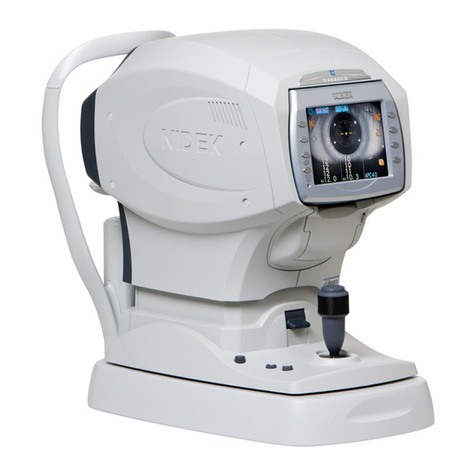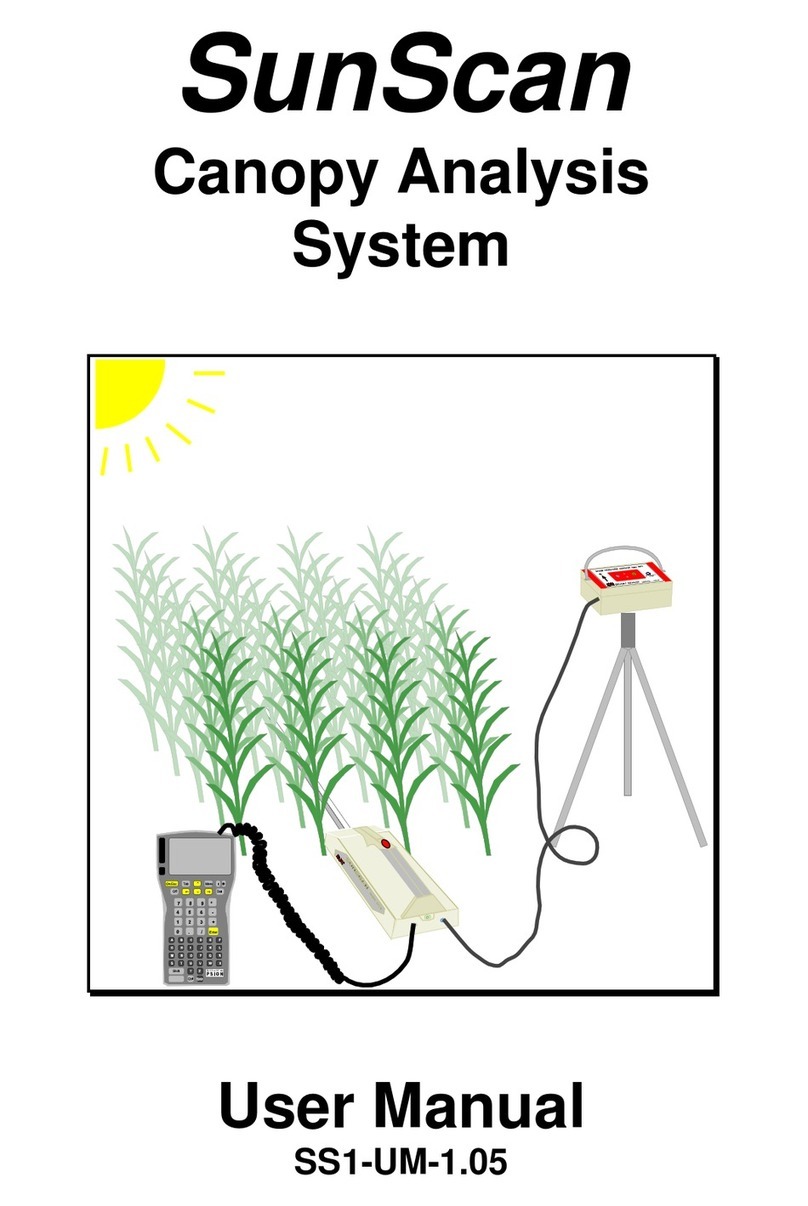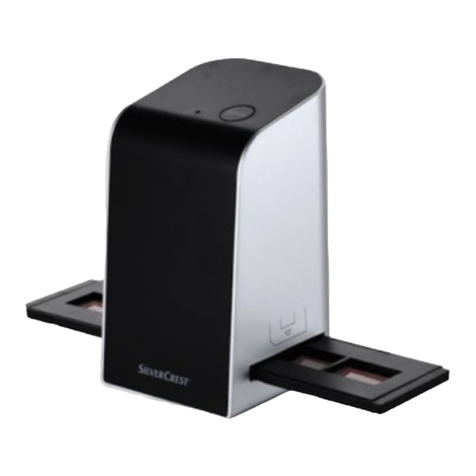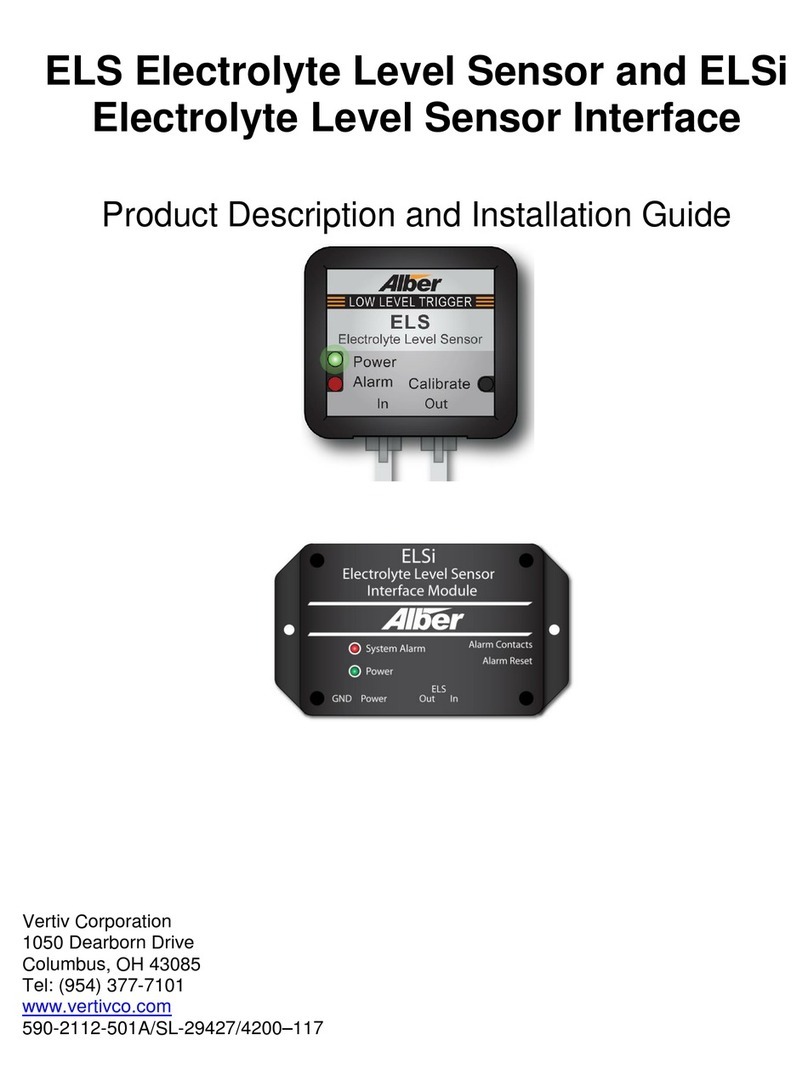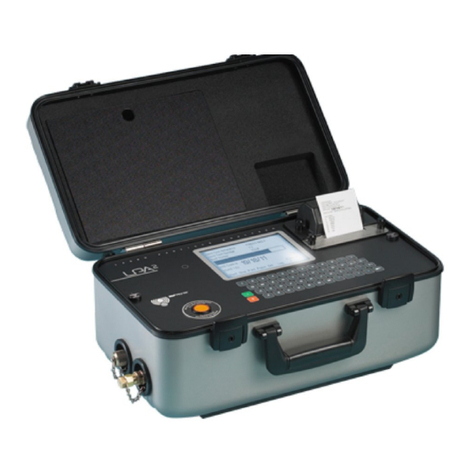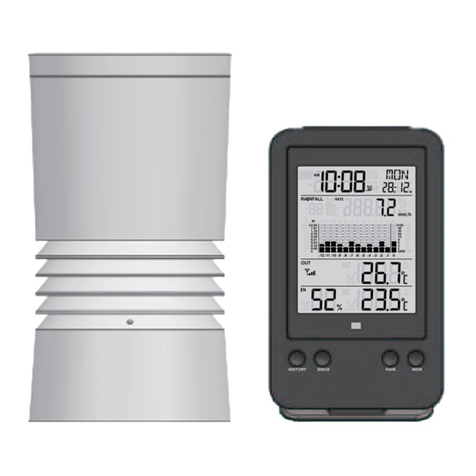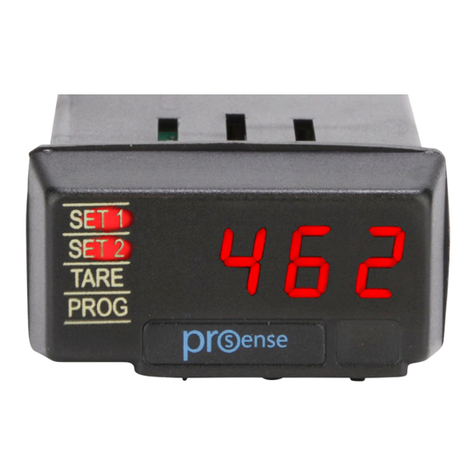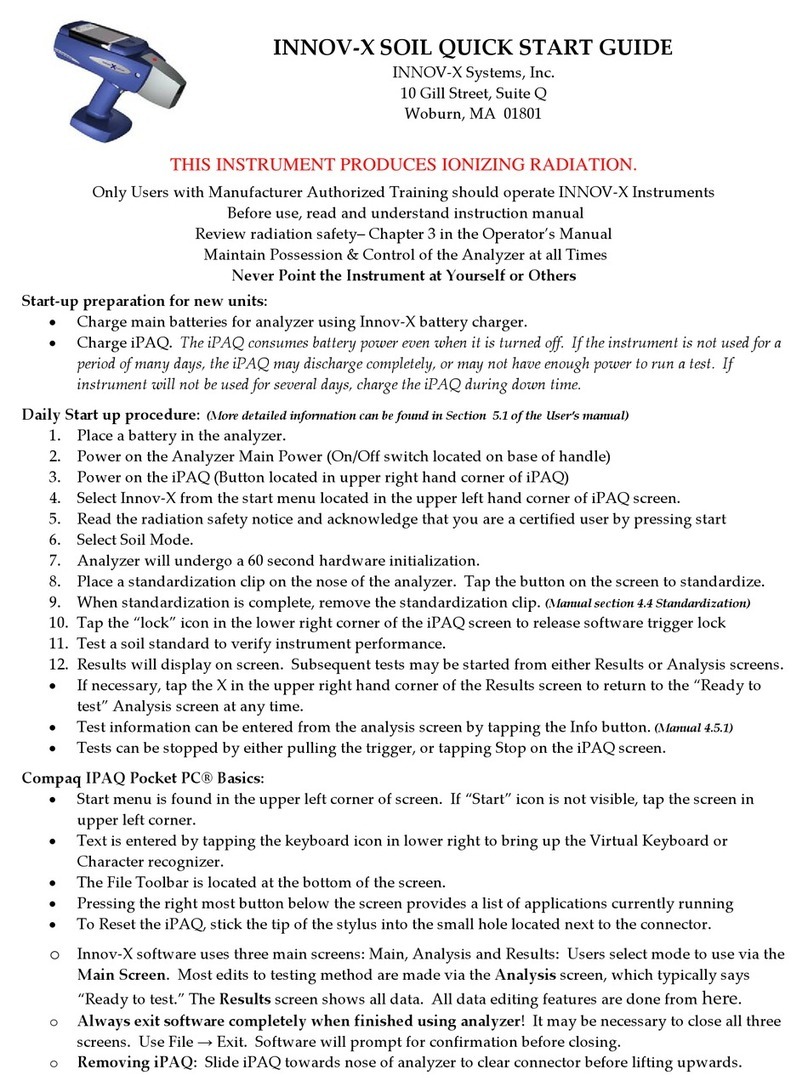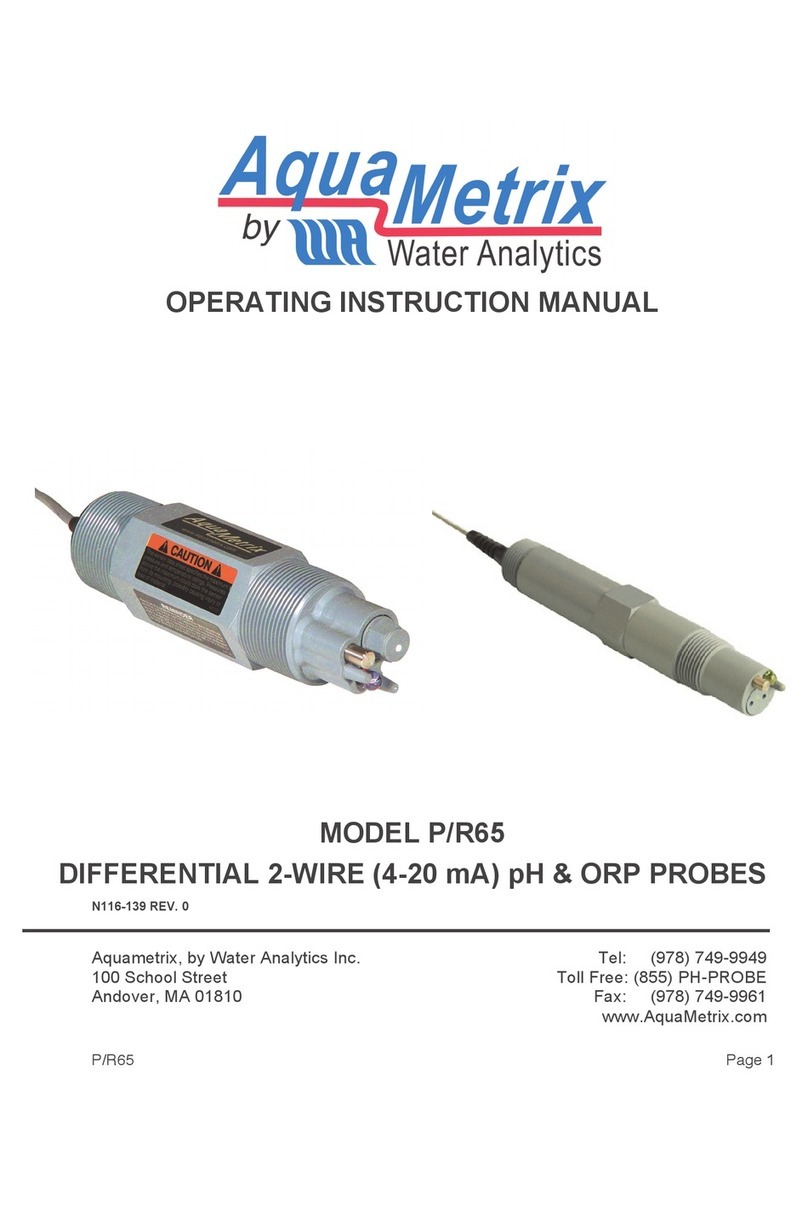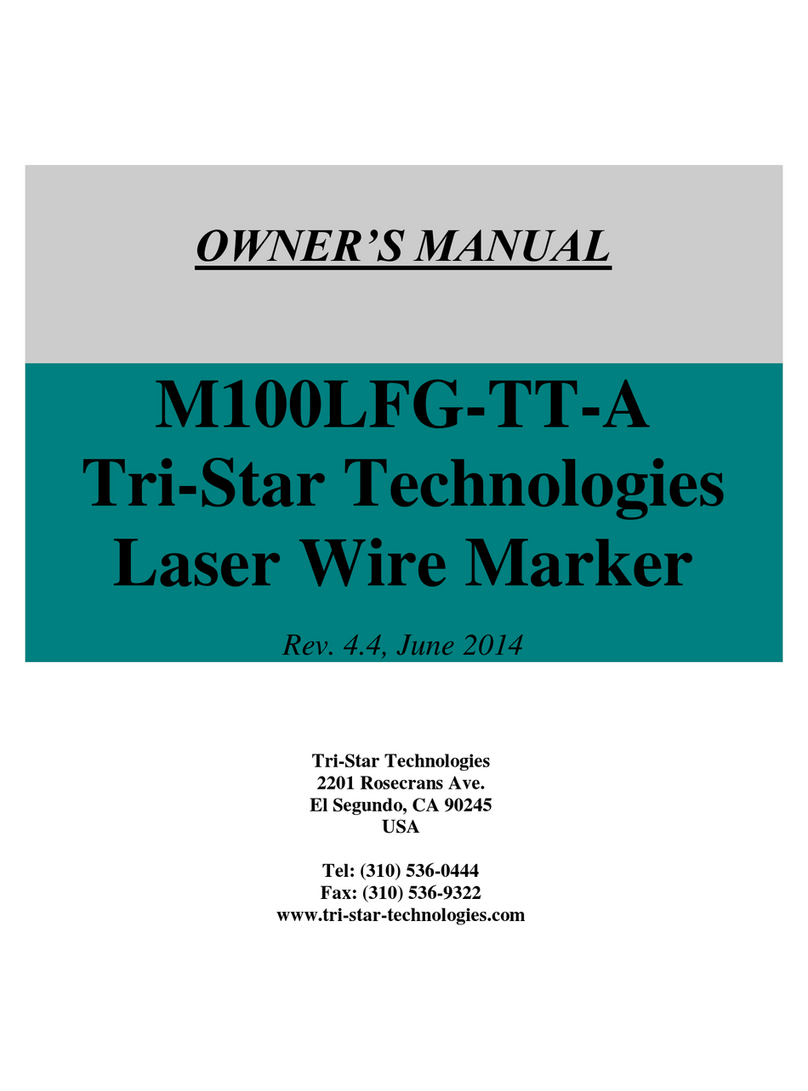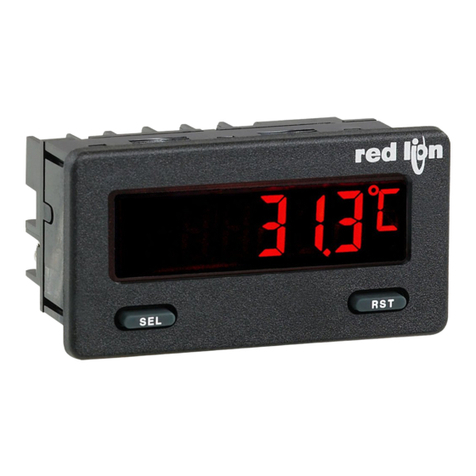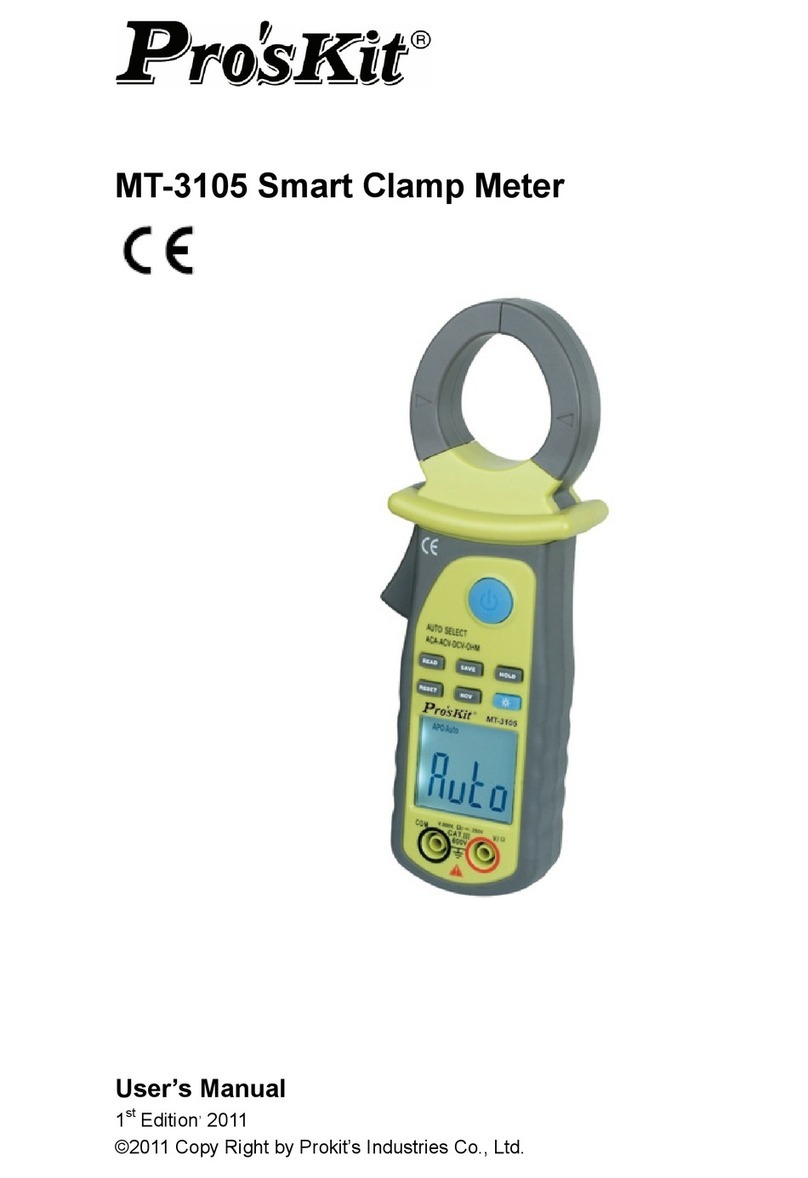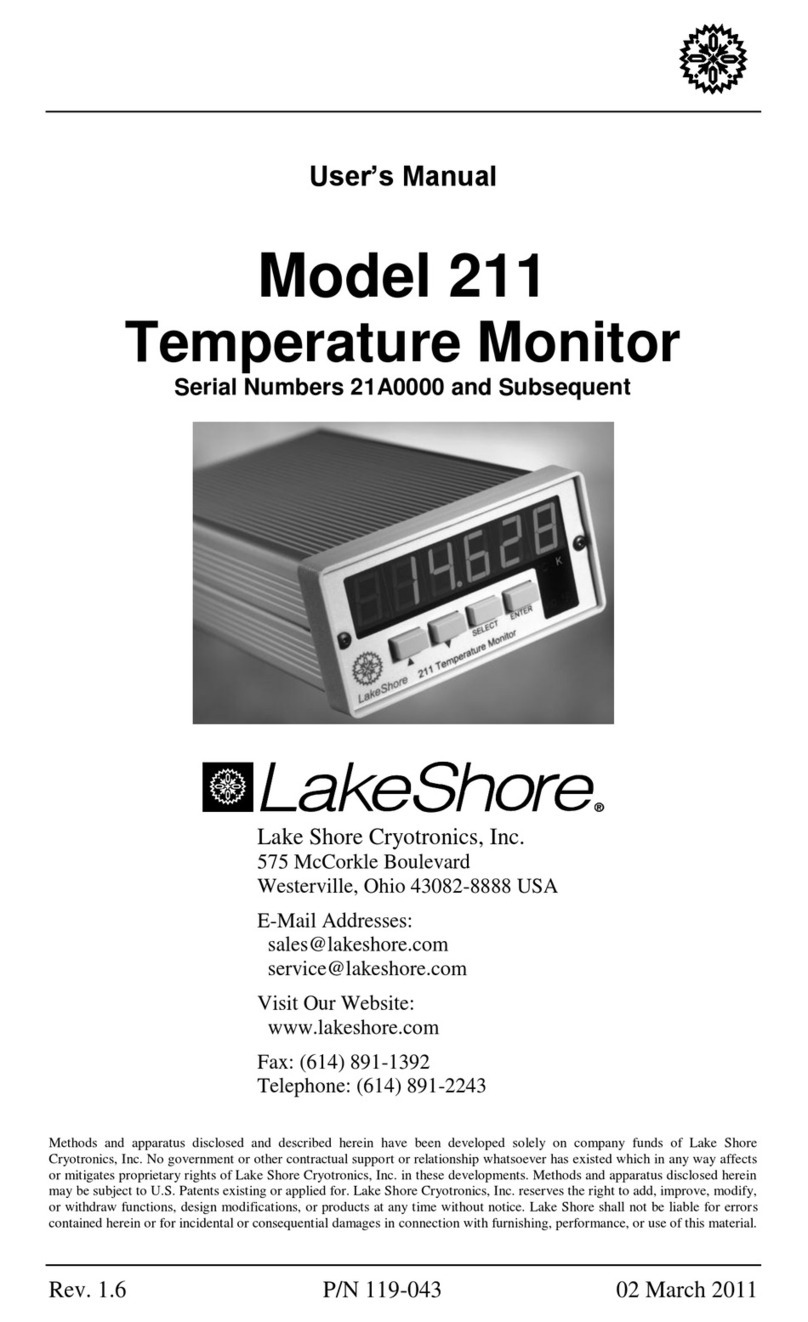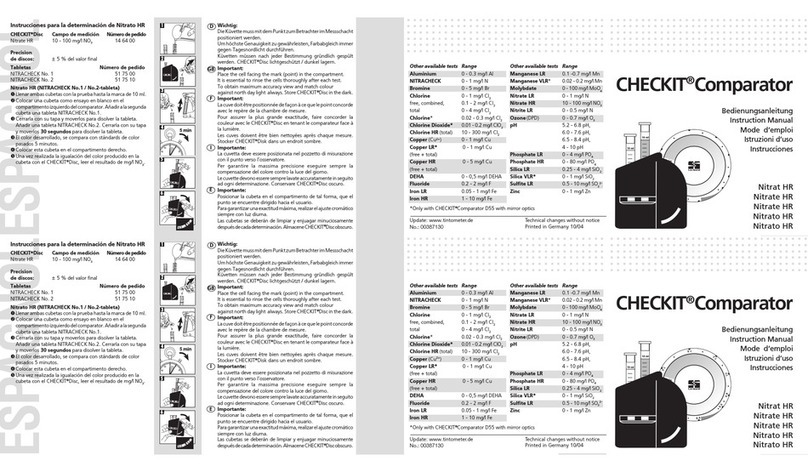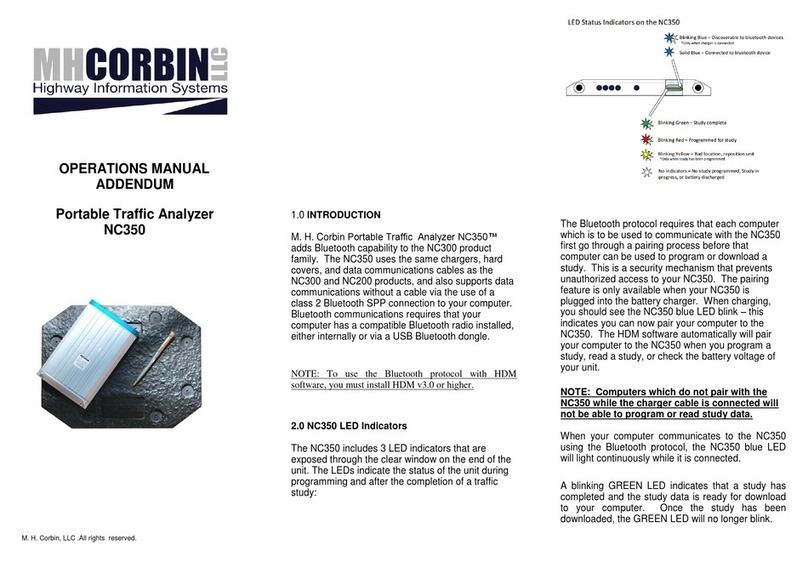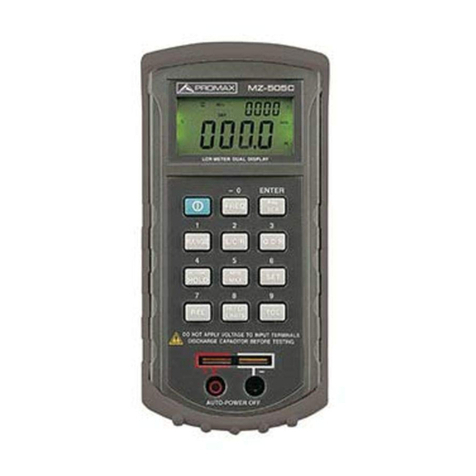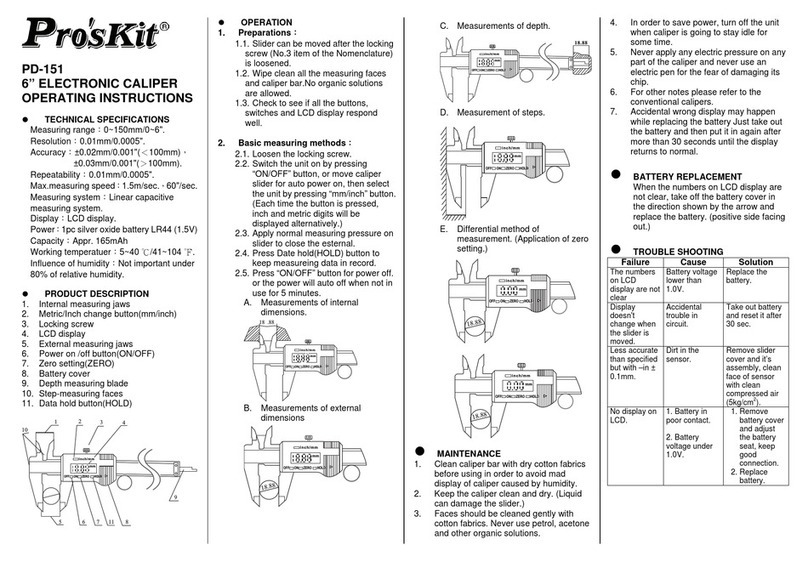Gilras GRU-5000 A User manual


Address: 9990 NW 14ST
Suite 105
Doral,FL33172
Phone:+1‐888‐334‐4640
Fax:+1‐786‐621‐1842
Email:[email protected]

CONTENTS
- I -
CONTENTS
PRECAUTIONS .................................................................................................................................................IV
WARNINGS.........................................................................................................................................................IV
CAUTIONS..........................................................................................................................................................VI
EXPLANATION OF SYMBOLS..................................................................................................................... VII
CHAPTER 1 INTRODUCTION ....................................................................................................................... 1
1.1 GENERAL DESCRIPTION ........................................................................................................................ 1
1.2 INTENDED USE ....................................................................................................................................... 1
1.3 INTENDED LOCATION OF USE ................................................................................................................ 1
1.4 CONTRAINDICATIONS ............................................................................................................................. 1
1.5 EXPECTED SERVICE LIFE....................................................................................................................... 1
1.6 SOFTWARE VERSION ............................................................................................................................. 1
CHAPTER 2 SPECIFICATIONS..................................................................................................................... 2
2.1 WORKING CONDITIONS.......................................................................................................................... 2
2.2 MAIN SPECIFICATIONS........................................................................................................................... 2
2.3 SAFETY................................................................................................................................................... 2
2.4 STORAGE AND TRANSPORTATION CONDITIONS.................................................................................... 2
2.4.1 Storage Conditions....................................................................................................................... 2
2.4.2 Transportation Conditions ......................................................................................................... 3
2.5 CLASSIFICATION..................................................................................................................................... 3
CHAPTER 3 INSTALLATION ......................................................................................................................... 4
3.1 STRUCTURE............................................................................................................................................ 4
3.2 ENVIRONMENTAL REQUIREMENTS......................................................................................................... 5
3.3 CONNECTION.......................................................................................................................................... 5
3.3.1. Connection of Probe ................................................................................................................ 5
3.3.2. Disconnection of Probe........................................................................................................... 5
3.3.3. Connection of Power Supply................................................................................................. 6
3.3.4. Disconnection of Power Supply............................................................................................ 6
3.3.5. Connection of Foot Switch..................................................................................................... 7
3.3.6. Replacement of Printing Paper.............................................................................................. 7
CHAPTER 4 OPERATION............................................................................................................................... 8
4.1 STARTUP AND SHUTDOWN..................................................................................................................... 8
4.1.1. Check before Startup............................................................................................................... 8
4.1.2. Startup Procedure..................................................................................................................... 8
4.1.3. Check before Use...................................................................................................................... 8
4.1.4. Shutdown Procedure ............................................................................................................... 9
4.2 INTERFACE INTRODUCTION.................................................................................................................... 9
4.2.1. Startup Interface........................................................................................................................ 9
4.2.2. ASCAN Interface...................................................................................................................... 10

CONTENTS
- II -
4.2.3. Patient Interface (Patient Information Interface)............................................................. 12
4.2.4. MENU Interface........................................................................................................................ 14
4.2.5. IOL Interface............................................................................................................................. 14
4.2.6. SETUP Interface ...................................................................................................................... 17
4.2.7. DATA BASE Interface............................................................................................................. 18
4.3 OPERATION .......................................................................................................................................... 19
4.3.1 Positioning ...................................................................................................................................... 19
4.3.2 A Biometer Unit.............................................................................................................................. 19
4.3.3 DATA BASE..................................................................................................................................... 28
4.3.4 Display of Saved Information ..................................................................................................... 29
4.3.5 Amendment and Storage of Parameters, and Clock Setting.............................................. 30
CHAPTER 5 CLEANING, DISINFECTION AND STERILIZATION......................................................... 34
FOR EUROPE:............................................................................................................................................... 34
5.1 HOW TO PREVENT CROSS-INFECTION................................................................................................. 34
5.2 CLEANING,DISINFECTION OF EYE CUP............................................................................................... 34
5.3 STERILIZATION PROCEDURE –PRE-STERILIZATION AND STERILIZATION OF THE PROBES ............... 34
5.4 PREPARATION OF STERILIZATION AGENT............................................................................................ 35
5.5 STANDARD METHOD ............................................................................................................................ 36
FOR U.S.A ...................................................................................................................................................... 39
5.6 CLEANING OF THE MAIN UNIT OF GRU-5000A ................................................................................. 39
5.7 HOW TO PREVENT CROSS-INFECTION ................................................................................................ 39
5.8 METHOD ............................................................................................................................................... 39
5.8.1 Preparation...................................................................................................................................... 39
5.8.2 Thorough Cleaning........................................................................................................................ 40
5.8.3 Disinfection ..................................................................................................................................... 40
5.8.4 Rinsing after Disinfection............................................................................................................ 41
CHAPTER 6 LABELING................................................................................................................................ 42
6.1 EXTERNAL LABEL ................................................................................................................................ 42
6.2 INTERNAL ID......................................................................................................................................... 42
CHAPTER 7 MAINTENANCE, ATTENTIONS AND SIMPLE DEFECTS TREATMENT..................... 43
7.1 MAINTENANCE AND ATTENTIONS TO INSTRUMENT ............................................................................. 43
7.2 MAINTENANCE AND ATTENTIONS TO PROBE....................................................................................... 43
7.3 MAINTENANCE OF LCD SCREEN......................................................................................................... 44
7.4 CHECK BEFORE USE............................................................................................................................ 44
7.5 TROUBLE SHOOTING............................................................................................................................ 45
CHAPTER 8 SERVICE AND SUPPORT INFORMATION........................................................................ 46
8.1 WARRANTY........................................................................................................................................... 46
8.2 ACCESSORIES AND MATERIALS........................................................................................................... 46
8.2.1 Consumables ........................................................................................................................... 46
8.2.2 Detachable Parts..................................................................................................................... 46
8.2.3 Materials.................................................................................................................................... 46

CONTENTS
- III -
8.3 SOFTWARE UPDATE AND SERVICES.................................................................................................... 46
ANNEX A PRUDENT USE STATEMENT.................................................................................................... 48
A.1 STATEMENT .......................................................................................................................................... 48
A.2 PRINCIPLE OF ALARA(AS LOW AS REASONABLY ACHIEVABLE)................................................ 48
ANNEX B PROMPT MESSAGE................................................................................................................... 49
ANNEX C.1 ACOUSTIC OUTPUT REPORT (IEC60601-2-37)............................................................... 50
ANNEX C.2 ACOUSTIC OUTPUT REPORTING TABLE ........................................................................ 51
ANNEX D GUIDANCE AND MANUFACTURER’S DECLARATION...................................................... 52
ANNEX E IOL FORMULA ............................................................................................................................. 56
ANNEX F REFERENCES.............................................................................................................................. 58

Precautions and Warnings
- IV -
PRECAUTIONS
The device should be operated by trained technicians.
It is prohibited to use the device on patients with eye trauma, inflammation or infection.
Please read the manual carefully before installation and operation
Please refer to Chapter 5. Cleaning, Disinfection and Sterilization to avoid cross-infection
while using.
Disconnect AC power before cleaning the housing case.
Please refer to Chapter 7. Maintenance, Attentions and Simple Defects Treatment for
maintenance attentions.
WARNINGS
The customer is fully responsible for maintenance and management of the instrument after
purchasing.
Do not make any modification to the software and hardware of the device without
authorization.
The power adaptor provided with the device meets the safety standard of medical electrical
devices. If damaged, contact the Manufacturer to purchase. Use of other adaptors may cause
safety risk.
The manufacturer won't be responsible for any damage or injury caused by any failure to
follow the instructions in the User Manual.
The manufacturer reserves the right to modify equipment characteristics without previous
notice under FDA Laws and MDD (93/42/EEC) Regulation.
The quality guarantee of the device will be invalid if it is opened (even partially), modified or
repaired in any way by anyone who is not authorized by the manufacturer.
____________________
This device is not intended for therapeutic use.
It is prohibited to use the device on patients with eye trauma, inflammation or infection.
The device should be used cautiously on patients without independent behavior abilities or
who are highly sensitive to contacting measurements, whose ineffective cooperation may
result in inaccurate measurements.

Precautions and Warnings
- V -
According to FDA laws, the GRU-5000 is a prescription Device and is to be used by or under
the supervision of a licensed physician.
This device is not intended for fetal use.
While plugging in the probe, make sure the red mark on the probe align with the red mark on
the socket.
While unplugging the probe, please be sure you are pulling the connector instead of the
cable.
Do not scratch the surface of the probe.
Do not drop the probes.
If the probe drops during using or moving, check the top and the housing of probe carefully,
and then check if it works well. Stop using if there is any problem and contact the
manufacturer or local distributor for service.
Warnings of predicable potential hazards are contained in the User Manual. Please maintain
vigilance at any time to those unpredictable hazards. The manufacturer won’t be responsible
for damages and losses caused by negligence or ignorance of the preventive measures in the
User Manual.
The assembly, expanding, readjustment, improvement and repair should be operated by
personnel authorized by the manufacturer. Do not open the housing for repair without
permission. The manufacturer won’t be responsible for the consequences of safety and
effectiveness caused by unauthorized repair.
Keep the original package properly. All detachable accessories should be put into the original
package before moving and transportation.
Without written consent of the manufacturer, no individual or organization is allowed to copy,
modify, or translate any part of the User Manual.
For any question, please contact the Manufacturer or your Local Distributor

Caution
- VI -
CAUTIONS
HOW TO PREVENT CROSS-INFECTION
It is prohibited to use the device on patients with eye trauma, inflammation or infection.
Between uses on different patients, the probe and eye cup must be thoroughly cleaned and
disinfected to prevent cross-infection.
The Manufacturer advocates a preventive action and a cleaning procedure in Chapter 5.
Cleaning, Disinfection and Sterilization.
____________________
CAUTION
Federal (US) Law restricts this device to sale by or on the order of a physician.
The GRU-5000 IOL calculator will calculate negative IOL values if such is predicted by the
data input.
These are displayed with a minus sign "-". Do not ignore this sign.
_____________________
TISSUE EXPOSURE TO ULTRASOUND ENERGY:
The GRU-5000 is designed for use in ophthalmology only.
While the manufacturer is not aware of any reports of adverse effects from using ophthalmic
ultrasound scanner, even at FDA pre-enactment levels, no other use is intended or implied.
The system controls limit of the output energy within the parameters specified for its intended
purpose. Please refer to Annex A of the User Manual.
No control of ultrasound energy is available to the users other than the duration of exposure,
considering the current concern for possible unknown hazards, and despite the extremely low
output intensities used in this ultrasound system.
The manufacturer recommends that patients’ exposure time during measurement be
minimized.

Explanation of Symbols
- VII -
EXPLANATION OF SYMBOLS
Front Panel
Power On or Power Off
OPEN Paper Housing Switch
PRINT Thermal Printer
Rear Panel
Symbol of "Type B"
Refer to User Manual
Serial Number
CE Mark
Manufacturer
FOOT SWITCH Foot Switch Socket
Power Input Socket
Right Panel
A-Probe A Biometric Probe Socket
User Manual
NOTE! Important information that
operator must read carefully.
IPX1/IPX7 The degree of protection against
ingress of liquids

Chapter 1 Introduction
- 1 -
Chapter 1 Introduction
1.1 General Description
The GRU-5000 A Ultrasonic Biometer for Ophthalmology is an ultrasonic measuring instrument
based on pulse reflection. It comprises A Mode Eye Axis Biometric Parameter Measuring Unit (A
Biometer).
The A Biometer consists of a 10MHz A-Scan probe (probe model: Prb1000A/10-C) and an axis
biometric parameter measuring unit. The axis is usually divided into three segments: anterior
chamber, lens and vitreous body. Since the tissue within the eye varies in different areas, the
acoustic velocity through these areas is also different. The summation of these three segments
(ACD + LENS + VITR) provides the axial length (AL). Based on the interface reflections of these
three different tissues, the ultrasonic A-biometry measures the transmitting time of ultrasound
through each tissue and calculates the length of each segment to finally get the axial length.
The GRU-5000A has a built-in Thermal Printer, used to print out patient information, A-Scan
measuring waveform, IOL calculating parameter and result.
The built-in memory of the GRU-5000A can store up to 180 patients' records.
1.2 Intended Use
The GRU-5000A is intended for axial biometric parameter measurement in clinical ophthalmology.
1.3 Intended Location of Use
The GRU-5000A is suitable to be applied in hospitals and ophthalmology clinics.
As the foot switch's protective degree against ingress of liquids is IPX1, it is not suitable to be used
in operating room and other locations where it is easy to splash liquid.
1.4 Contraindications
It is prohibited to use the device on patients with eye trauma, inflammation or infection.
1.5 Expected Service Life
Based on the experience of products sold (and considering technology update cycle), as well as
the aging of the major part –transducer will probably reduce the basic performance, the product's
expected service life is determined as five years according to the normal usage of six hours each
working day. (Service life may extend if the major parts, like probe, are returned to manufacturer
for update.)
1.6 Software Version
V1.0.0.10

Chapter 2 Specifications
- 2 -
Chapter 2 Specifications
2.1 Working Conditions
Environmental Temperature: 5℃-40℃
Relative Humidity: ≤80%
Atmospheric Pressure: 70kPa-106kPa
The Separate Power Supply: Input: AC100~240V, 50/60Hz,
Output: DC12V, 4A
Rate Power: 50 VA
2.2 Main Specifications
Ultrasonic frequency: 10MHz;
Display resolution: 0.01mm;
Total gain of receiver: ≥100dB;
Adjustable gain scope: 0~50dB;
Measuring scope (AL): 15 mm~40mm;
Measuring accuracy: ≤±0.05mm;
Measuring Parameter: ACD, LENS, VITR and AL;
Measuring mode: automatic mode or manual mode can be selectable. Automatic mode for
Normal, Cataract and Aphakic mode;
Measuring method: contact and immersion, can be selectable;
IOL calculation: SRK/T, SRK-II, BINK-II, HOLLADAY, HOFFER-Q, HAIGIS, and IOL calculation
formula after corneal refractive surgery: HISTORY DERIVED, DOUBLE-K/SRK-T, REFRACTION
DERIVED, ROSA and SHAMMAS.
2.3 Safety
Satisfy the requirements of IEC 60601-1:2005 and IEC 60601-2-37:2007.
The acoustic output parameters: see Annex C.
2.4 Storage and Transportation Conditions
2.4.1 Storage Conditions
The device should be stored in non-corrosive gas and well-ventilated room with
environmental temperature of -20℃-40℃and relative Humidity≤80%.

Chapter 2 Specifications
- 3 -
2.4.2 Transportation Conditions
The accessories such as Probe should be packed into the original package before
transportation. Severe impact and crash, rain and snow shall be avoided.
2.5 Classification
As per the type of protection against electric shock: Class I
As per the degree of protection against electric shock: Type B
As per the degree of protection against ingress of liquids:
— Main unit: IPX0;
— Part of Probe that can be immersed: IPX7;
— Foot switch: IPX1
As per the disinfection and sterilization method recommended by the manufacturer:
— see §5 Cleaning, Disinfection and Sterilization.
As per the safety degree when used under flammable anesthetic gas mixed with air or under
flammable anesthetic gas mixed with oxygen or Nitrous oxide: not allowed.
As per working mode: continuous working

Chapter 3 Installation
- 4 -
Chapter 3 Installation
3.1 Structure
The structure of the instrument: See Figure 3.1.
Figure 3.1 Structure of the Instrument
The Rear Panel: See Figure3.2
Figure 3.2 Rear Panel of the Instrument
The power adaptor of the product, with input voltage of AC100-240V and output voltage of
DC12V/4A, meets the safety requirements of medical electric device, as shown in Figure 3.3:
Figure 3.3 Power Adaptor
DC Power Input Plug
Power Ada
p
to
r
DC Power Input Socket Foot Switch Socket USB Interface
1. Foot Switch
2. Color LCD Touch Screen
3. Power Input Indicator
4. Working Indicator
5. Paper Housing Cover
6. Paper Housing Switch
7. Probe Holder
8. A-Biometer Probe Socket
9. A-Biometer Probe
10. Power Switch
1 2
5
8
6
9
4
3
10
7

Chapter 3 Installation
- 5 -
3.2 Environmental Requirements
1) The instrument should be operated in a clean environment. Air-conditioned environment
is recommended.
2) The instrument should be placed on a stable worktable or platform. Avoid direct sunlight.
3) Please use the supplied Power Adaptor which is in accordance with the safety standard of
medical electric equipment; do not use any other adaptors.
4) The power outlet should be with good grounding. Improper connection of protective earth
may cause not only interference, but also the risk of increasing leakage current.
5) Do not block the ventilation window of the instrument. When the temperature of the
instrument is not normal, please contact the manufacturer for service.
6) Although the EMC of the instrument meets the requirements of IEC 60601-1-2, it should
be placed to avoid strong electromagnetic radiation equipment (such as microwave, radio
frequency therapy equipment, etc.).
7) Please do not put the instrument in a place where it is difficult to disconnect the power
supply.
8) The instrument should be placed in a position where the operator can face the instrument
and view the screen easily. The distance between the instrument and the patient should
enable the probe to contact the patient's eye conveniently.
9) The instrument should always be placed safely to prevent falling of the probe.
10) The instrument has no special protective measures for discharge effect of cardiac
defibrillators; it is not suitable for use with high-frequency surgical equipment.
3.3 Connection
Note: It is prohibited to plug in or plug out any accessories while the instrument is
running.
3.3.1. Connection of Probe
Plug the A-Biometer probe into the A-Probe socket on the right panel;
Note: While plugging in the probe, make sure the red mark on the probe align with the
red mark on the socket, as shown in Figure 3.4 (a).
3.3.2. Disconnection of Probe
To disconnect the probe, please hold the ring of the connector and pull it out along the horizontal
direction, as shown in Figure 3.4 (b).

Chapter 3 Installation
- 6 -
Note: Don't pull the probe cable strongly while unplugging the probe.
(a) Connection of Probe (b) Disconnection of Probe
Figure 3.4 Connection/Disconnection of Probe
3.3.3. Connection of Power Supply
Figure 3.5 Connection of External Interface
1) Plug the DC Power Output Plug of the Power Adaptor in the Power Input Socket on the rear
panel of the instrument;
2) Connect one end of the Power Cable with the Power Adaptor, and the other end to the wall
outlet, as shown in Figure 3.5.
3.3.4. Disconnection of Power Supply
1)Turn off the Power Switch on the front panel;
2)Disconnect the main power plug of the Power Adaptor and the wall outlet.
Note: Take care of safety while connecting or disconnecting the power supply.

Chapter 3 Installation
- 7 -
3.3.5. Connection of Foot Switch
Plug the Foot Switch connector into the Foot Switch Socket on the rear panel of the instrument, as
show in Figure 3.5.
3.3.6. Replacement of Printing Paper
The built-in printer is a thermal printer that uses thermal printing paper. Please purchase and
replace the printing paper according to the specific model provided by the Manufacturer, see
§8.2.1 Consumables.
Replacement of printing paper:
1) Press "OPEN" button to open the cover of the paper housing;
2) Take out the reel of the paper from the paper holder and add new paper, see Figure 3.6;
Figure 3.6 Replacement of Printing Paper
3) Pull out the printing paper from the paper slot for about 1cm, and push lightly to close the
cover of the paper housing. Pay attention not to let the paper stuck in the slot. Close the paper
housing finally.
Note: 1) If the paper doesn't run properly, please check installing method and
reinstall.
2) The thermal paper has thermal side, when the paper runs normally but
nothing printed out, please open the paper housing and reinstall the
printing paper with the other side.

Chapter 4 Operation
- 8 -
Chapter 4 Operation
4.1 Startup and Shutdown
4.1.1. Check before Startup
Before the instrument is started up, please check:
1)Whether the instrument is put in a proper place and whether the equipment around may
cause interference;
2)
Whether the appearance of the instrument is fine and whether there is crack on the housing
and LCD screen;
3)Whether the probe is connected properly, and whether there is crack or damage on the
surface of probe and cable; whether the probe cables are intertwined or intertwined with other
cables;
4)Whether the foot switch is connected properly and has mechanical response when press,
and whether the foot switch cable is intertwined with other cables;
5)Whether there is printing paper; and
6)Whether the connection of power supply is completed and the Power Indicator lights up;
whether the Power Cable is intertwined with other cables.
4.1.2. Startup Procedure
1)Make sure there is no problem and the Power Indicator lights up before the instrument is
started.
2)Start the instrument: Press the Power Switch button on the Front Panel for over 2 seconds,
the instrument starts working. Now the Working Indicator lights up and the main interface
appears on the screen.
4.1.3. Check before Use
After the instrument is started up, please check:
1) Whether the Working Indicator lights up;
2) Whether the touch screen is effective;
3) Whether waveform displayed when clicking SCAN/FREEZE key under the ASCAN
Interface, and whether the red indicator in the front end of the probe lights up when
measurement;
4) The parameter setting, following §4.3.6 Amendment and Storage of Parameters, and
Clock Setting for operation in detail; and
5) Whether disinfection of the probe has been carried out as required; whether the surface
of the probe is deformed or damaged and whether the probe cable is damaged. In case eye

Chapter 4 Operation
- 9 -
cup is used, check whether the eye cup has been disinfected and whether there is visible
damage.
4.1.4. Shutdown Procedure
While the instrument is switched on, press the Power Switch on the front panel for 2 seconds, the
instrument will switch off.
Place the instrument and its accessories properly after shutdown:
1) Put the probe into the probe holder and make sure the probe cable can't be dragged by
accident, or disconnect the probe and put it properly;
2) Put the foot switch properly and make sure the foot switch cable is placed properly to
prevent others from stumbling by the cable and drop of instrument;
3) Plug out the Main Power Plug of the Power Adaptor cable and put it properly.
4.2 Interface Introduction
4.2.1. Startup Interface
Switching on the GRU-5000A, the buzzer will beep shortly and then enter the Login Interface (see
Figure 4.1).
Figure 4.1 Login Interface
Click ENTER key directly under the Login Interface will enter the ASCAN Interface of the default
ADMIN user system. Click ▼to select other user system, see Figure 4.2; after selection, click
ENTER key to enter the corresponding ASCAN Interface of the relevant user system. See §4.3.6
for amendment of the user name, in which ADMIN is the particular system name that can’t be
amended.

Chapter 4 Operation
- 10 -
Figure 4.2 System Selection Interface
4.2.2. ASCAN Interface
Enter the ASCAN Interface, the default setting of the system is automatic measurement (AUTO),
contact method (CONTACT) and normal eye (NORMAL), the interface is shown in Figure 4.3.
Figure 4.3 ASCAN Interface
The function of each part under the ASCAN Interface:
Data Display Area: The result of measurement display area.
Waveform Display Area: ASCAN ultrasonic echo waveform display area.
Patient Information Display Area: Display the input patient information. Click this area to
enter the Patient Information Interface.
Threshold: A value associated with voltage. The echo pulse with amplitude more than the
value is determined as the reflective wave of acoustic interface for different tissues. The cross
Data Display Area
Threshold
Threshold Line
Date and Time
Display Area
Patient Information
Display Area
Waveform Display Area

Chapter 4 Operation
- 11 -
point of the reflected pulse front and the threshold will be the basic point to calculate
transmission time of ultrasound in different tissues.
Threshold Line: The threshold value displayed in graph.
Date and Time Display Area: Display current date and time.
GAIN: Gain control key. Range of variation: 0-50dB; the default value is 30dB. Click to select and
the key turns to green. The value of gain is adjusted by ▲and ▼keys when it is selected;
OS: OS/OD (left/right eye) selection key. Click to switch between left eye and right eye;
AUTO: Measuring mode selection key. Click to switch between AUTO (automatic measurement)
and MANL (manual measurement);
CONT: Measuring method selection key. Click to switch the measuring methods between CONT
(contact method) and IMME (immersion method);
NORM: Eye model setting key. Click to open the MODE SETTING dialogue box and set eye
model. The MODE SETTING dialogue box includes the settings of: Measuring Modes, Measuring
Methods and Eye Models, see §4.3.2.2.c for specific operation;
SCAN/FREEZE: Scan/Freeze control key. Click to start or freeze scanning. The key is blue
indicates the state of scanning stopped; while green indicates scanning;
: Up and Down keys, used to adjust the position and value. The keys are used to
adjust the position of the Threshold Line when the Threshold Line displayed, and to adjust the
gain when the GAIN function is activated. In other cases, they are used to change the position of
the cursor indicator (blue point) and cursor bar. The position of the cursor and cursor bar indicates
the position of the current operating data group;
MARK: Mark key, used to mark unreliable data group. The marked group stores data and
waveform, but doesn't participate in calculation. The cursor stays in the marked group, click again
to cancel the mark;
DEL: Delete key, used to delete unreliable data and waveform. Click to call out the dialogue box.
Choose YES to delete the selected data and waveform. The deleted data will not be restored.
Choose NO to give up deletion and quit the dialogue box;
CLEAR: Clear key, used to clear data and waveform. Click to call out the dialogue box. Choose
YES to clear all data and waveform displayed. The cleared data will not be restored. Choose NO
to give up clear and quit the dialogue box, see §4.3.2.6 Save and Clear under Measuring
Interface;
IOL: IOL (Intraocular Lens) Calculation key. Click to enter the IOL Interface;
MENU: Menu key. Click to enter the MENU Interface, from where it is able to enter other
interfaces;
Table of contents
Other Gilras Measuring Instrument manuals

